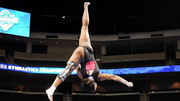

Deion Sanders didn’t just bring eyeballs to Colorado when he stepped into the Buffaloes’ facility; he brought his will to build from the ground up. Last year, Coach Prime told Andre Hart how he built six fields with almost no money. “You know where they came from, right? Here [showing empty pocket]. Ain’t no more that’s what we built six fields out of this,” he said. This time, however, he had millions at his disposal. Yet, the Buffs’ recent offseason change at Folsom Field isn’t exactly winning hearts. Some tried to be funny; others remained critical.
Watch What’s Trending Now!
The Colorado Buffaloes’ official X page posted, “New look inside Folsom Field,” debuting the all-artificial turf makeover at CU’s historic stadium. That’s right—natural grass, which had been in place since 1998, has officially been swapped out for synthetic turf. The decision was a mix of strategy and necessity.
Athletic Director Rick George explained it best: “I think putting turf down there gives us flexibility, certainly with the change in the College Football Playoff. Being a northern school, you don’t grow grass after October, and having a game in December was a big part of that consideration.”
ADVERTISEMENT
There’s logic in the madness. From 1971 to 1998, CU played on a synthetic surface—and some of those years were among the most successful in program history. So maybe there’s a touch of good luck built into the blades. But more than nostalgia, the real reason for the change boils down to playoff eligibility and winter utility. “Being a northern school, you don’t grow grass after October, and having a game in December was a big part of that consideration. Plus, it gives us another field we can practice daily that will benefit our football program,” George added. If CU’s ever hosting a December CFP game—hey, dream big—the turf ensures game-readiness even in the snow-capped Rocky Mountains.
New look inside Folsom Field 🏟️ pic.twitter.com/nid6axS4Tn
— Colorado Buffaloes Football (@CUBuffsFootball) June 21, 2025
There’s also the multipurpose benefit. More concerts, more events, more game-day flexibility. All that’s made possible because artificial turf is durable, accessible, and low maintenance. Still, this transformation didn’t come cheap. Colorado shelled out more than $1 million for the upgrade, though it’s expected to last between 12 and 15 years. The investment is long-term, and it’s clearly a bet on Deion Sanders’ trajectory—both on the field and off it.
ADVERTISEMENT
However, fans aren’t exactly breaking into applause over the new green. In fact, social media backlash kicked in almost immediately. Many football purists and athletes are still skeptical about the toll turf takes on the human body. There’s mounting concern, both anecdotally and in studies, that artificial turf surfaces contribute to a higher risk of soft tissue injuries—especially ACL tears and shin splints.
If you’ve played on turf, you probably felt it: the unforgiving stiffness, the wear on the joints. So it’s no surprise Buff fans are side-eyeing the makeover ahead of the season opener on August 29 against Georgia Tech.
ADVERTISEMENT
The online turf talk
The post wasn’t up for long before the reactions rolled in, and let’s just say they were far from subtle. One fan dropped the hammer with, “That fake turf is going to tear up many ACLs.” That’s not just hyperbole. Studies over the past decade have indeed pointed to a higher rate of non-contact lower-body injuries on synthetic turf compared to natural grass.
Another blunt opinion chimed in: “Sh-tty ahhh field.” Okay, not the most articulate, but the message came through loud and clear. It reflects a visceral disappointment. For many fans, the $1 million price tag came with expectations of aesthetics, not just functionality.
ADVERTISEMENT
Then came the traditionalist: “Ugh. Back to turf. So unfootball like.” There’s something poetic here. Football’s roots have always been in the mud, grass stains, and winter patches of real grass. For old-school fans, switching back to turf feels like turning away from the soul of the sport, even if it’s a smarter logistical move for Colorado’s climate and playoff ambitions.
Top Stories
Tom Brady Makes Career Announcement for Vegas as Pete Carroll Addresses Losing Raiders Locker Room

Cam Newton Makes NFL Return Conditions Clear to 32 Teams as Panthers Legend Confirms Retirement Stance

J. J. McCarthy Awaits Punishment From Vikings After Rejecting Kevin O’Connell’s Instructions

$250M Michigan Donor Promises to Get Kenny Dillingham if Green Lit to Pursue ASU HC Himself

Dale Jr. Warns of Deeper Issues as Joe Gibbs Parts Ways With Decade-Long Executive

Ex-Georgia Gymnastics Star Opens Up On Facing Mistreatment Months After NCAA Program Switch

Some tried to give it a fair shake. “Not being a hater. Genuinely curious what are the changes. Thank you.” That’s the polite voice in the room—looking for clarity rather than criticism. The university would be wise to communicate the long-term plan more clearly: how it impacts player safety and why it’s the right move for Deion Sanders’ long-term vision.
But perhaps the most sarcastic jab came from a fan who wrote, “I’m sure it’s much safer now that it’s plastic instead of natural grass…” The irony hits hard. Because no matter the logic behind the turf, fans are right to question how “safe” this really is for the athletes who’ll be cutting, planting, and sprinting at full speed.
ADVERTISEMENT
ADVERTISEMENT
ADVERTISEMENT
ADVERTISEMENT

